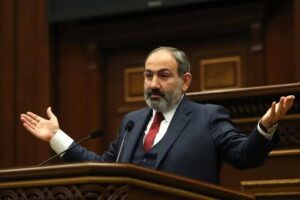
Adnan Nasser - 06/06/2025
As the Middle East reshapes itself in the wake of seismic shifts, including the October […]

The Liberum - 27/11/2024
Georgia’s parliamentary election in late October was one of the most controversial and important elections […]

Ken van Ierlant - 14/11/2024
The dispute between Israelis and Palestinians over who rightfully owns the area between the River […]

Arthur Blok - 15/07/2024
In the shadow of hostilities in southern Lebanon between Hezbollah and Israel, ‘normal’ life goes […]

Robert M. Cutler - 06/07/2024
Azerbaijan and Armenia moved closer to peace since Azerbaijan re-established political control over its whole […]

Nikola Mikovic - 02/07/2024
Defeated by Azerbaijan and abandoned by its nominal ally Russia, Armenia seeks to establish closer […]

Nikola Mikovic - 25/06/2024
Despite Moscow’s harsh threats and fearmongering rhetoric, Ukraine crossed another Russia’s “red line” and attacked […]

Arthur Blok - 11/06/2024
To no surprise, Israeli Prime Minister Benjamin (Bibi) Netanyahu and his extreme-right allies ignored an […]

Nikola Mikovic - 30/05/2024
Several Western countries gave Ukraine the green light to use their weapons to hit targets […]

Marita Kassis - 19/03/2024
It’s not just about celebrating the women who have stood the test of time and […]









